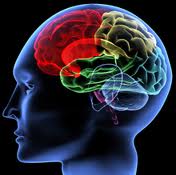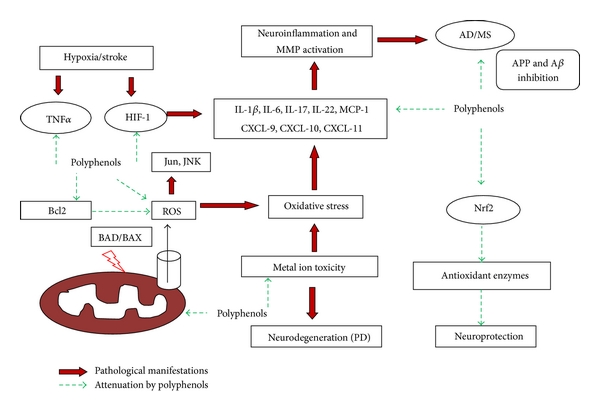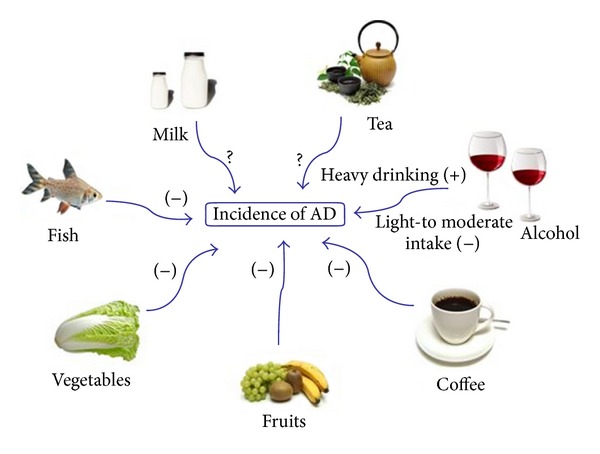BRAIN Trust
 Monday, August 20, 2012 at 9:45AM
Monday, August 20, 2012 at 9:45AM July 6, 2023 Update:
The FDA just approved a new drug, Leqembi, developed by the Japanese drugmaker Eisai and the U.S.-based drugmaker Biogen, that slows down Alzheimer's brain dysfunctions. The slow down was 27%. This only buys some extra brain functioning time. It is not a cure. This drug targets a type of protein in the brain called beta-amyloid, assumed by scientists to be a causal factor in Alzheimer’s disease. ref, (BE SURE TO READ ABOUT LIFE-THREATENING SIDE EFFECTS for this new drug) This approach has in the past had many failures. ref
This next article now gains timely significance even though most of it was written 10 years ago. It does mention the early research on this new drug.
Article
New discovery test for Alzheimer's 7-2020: Scientists have found that testing for this protein, tau protein, called p-tau217, predicts with great accuracy who is developing ALZ even before symptoms appear. ref
CAUTION: Many of the studies referenced are small and mainly by one research party. They have to be verified by other research before gaining wider acceptance. But, trends at least should elicit an exploratory approach if safety factors warrant until future research verifies one way or the other. Waiting could be too late.
Another recent study generating interest from new results showing 27% slowing of Alzheimer's progression is found here, September 2022. Information on drug here.
SIDEBAR: The differences between Beta amyloid and tau proteins on brain function. ref
Can you trust your memory?
Brains naturally slow down over time, well actually, they shrink a little. ref ref But the level of neuron mis-firings discovered in Alzheimer's is NOT natural. This process needs help to arrive at such a state. Why are so many people in such a hurry to offer this help? Diet, Environment, and Lifestyle. ref (nutrient in grapes and berries) ref (exercise) ref (diet) And yes, a genetic link to apoE4: and the most recent theory relating to brain blood glucose (sugar) impairment preceding dementia symptoms and associations. ref ref
Here is a section from the diet reference: Important dietary sources of polyphenols include apples, berries, cocoa, herbs, red wines, seeds, onions, and tea [49]. Dietary polyphenols have also been implicated in prevention of oxidative damage and LDL oxidation [50–52]. This review briefly outlines the pharmacological role of polyphenols in preventing neurodegenerative diseases based on the most recent scientific literature (Figure 1). < also copied below.
Even though the figure 1 chart symbols might not make much sense, it shows how many areas where food polyphenols play a role in blocking or slowing down the pathways leading to dementia. Some new research offered here for natural nutrients on brain functions.

In conclusion, recent scientific evidence suggests that neurodegenerative diseases are accompanied by oxidative stress, inflammation, metal accumulation, and mitochondrial dysfunctions.
THE BAD STUFF FOR BRAINS listed below
Here are some of the things and conditions science has found that can speed up brain cell demise or have an adverse association that relate to the areas just listed in reference conclusion above:
- Higher copper intake coupled with greater trans fat and saturated fat intake. ref ref ref
- Excess consumption of folic acid as well as a deficiency, especially if low vitamin B12 levels, too. ref ref ref
- Lower intakes of dietary niacin, especially if cardiovascular disease also present.* ref
- Iron levels are often increased in brains of those with dementia. ref
- Too much or too little while Moderate amounts of Supplemental Folate, (not just the synthetic Folic acid form), B6, B12 and Omega 3 maintain memory indexes better in certain AD groups. B12 most effective, other nutrients at these dosages little if any effect, maybe slight negative. (look at dosages & folate form in next reference> ref
- Low cholesterol levels might jeopardize brain cell neurotransmitter receptors, influencing concentration, mood, and memory.*** ref ref
- Some studies show statins improve memory. Rather than the cholesterol level, might be the antioxidant activity of statins that exhibits this influence. ref
- Low levels of the so-called Good cholesterol, HDL, are associated with greater cognitive decline. ref
- Cholesterol and memory turns out to be a very complex situation and needs more research. ref ref But generally higher cholesterol in seniors linked to better memory.
- Lower Vitamin C plasma levels are found with dementia but not necessarily lower vitamin C intake. ref ref ref <cautious review, see 9 below
- Low Vitamin D levels are associated and may influence dementia onset, while elevated D and calcium supplements can be associated with greater brain lesions. ref ref
- On a POSITIVE note, higher total Vitamin E and higher all eight vitamin E family offers protection. ref article ref
- Low Vitamin E levels are associated with greater risk of AD. ref
- High alpha tocopherol, vitamin E, and low gamma tocopherol, one of 8 vitamin E family members, levels in brain are associated with greater risk of alzheimer's. ref
- Question concerning MTHFR gene interruptions and dementia** (relates to folate process)
- Just added, Zinc levels tend to be lower in the brain of those with SD. BUT, extra zinc may also be toxic to the brain through both an amyloid beta enzyme action and the glutamate channel. There could be an optimal window of zinc dosage to protect brain cells. ref
- When Zinc and copper are liberated from normal synaptic activity, if a slightly acidic condition is present, both zinc and copper can reduce to ionic forms which are toxic to the nervous system. ref ref ref ref
- Supplemental Carnosine can counteract ionic zinc and copper toxicity in the brain. NOTE: these zinc and copper effects are not necessarily related to higher intakes, more of just a dysregulation of processes in the brain that control forms. Too low could be a problem by limiting SOD production and oxidation balance in the brain.
- Higher calcium intake decreases zinc absorption and balance. Calcium carbonate supplement at 600mg reduced a 7.2 mg zinc intake by 50%. ref
- High calcium intake with (or without) vitamin D is associated with greater amount of brain lesions, verified by MRI. ref ref
- New research points to a calcium imbalance in brain cell mitochondria with reduced energy, decreased sodium calcium transport, resulting in calcium build up. ref
- A reduction of mitochondrial energy is found in dementia. CoQ10 is supportive of energy production and anti-oxidant stress. ref ref
- Magnesium is needed in brain to prevent synaptic loss, plus to also activate vitamin D, and to balance out calcium loads. ref 50% or more of Americans are magnesium deficient. Plus magnesium is difficult to get past the blood brain barrier. ref
- And very recent finding, high blood sugar has a negative association with memory as a high calorie diet relative to energy expenditure. ref.
- LL-37, a vitamin D built peptide, is underexpressed in AD. ref This also brings up the diabetes of the brain condition too. ref
- Active vitamin D and produced LL-37 are also involved with skin health showing relationship with 9-cis retinoic acid (9-cis beta carotene) as RXR receptors. article
- Obesity and higher trglyceride levels in brain impair cognitive functions. ref ref
- New USC research finds leaky brain blood vessels present at early ALZ. ref Vitamin C on this> ref
DNA Methylation
*NOTE: Here is a good place to introduce the important methyl group functions. People take Lecithin**** and SAM-e, S-Adenosyl Methionine, to increase this methyl process that results in lower inflammatory response, a factor in cardiovascular health, cancers, and brain function. The process of methylation is simply the transferring of a methyl group from one molecule to another. This methyl group donation action is needed to produce energy, maintain brain function, and for correct DNA metabolism. ref The important neurotransmitters, L-Dopa, Dopamine, Epinephrine, and Phosphatidylcholine are produced by the result of this process. ref If De-methylation happens faster than methylation, the aging process speeds up....end Note
 Foods that tend to (+) increase, or ? have mixed for different forms, or (-) reduce incidences of AD
Foods that tend to (+) increase, or ? have mixed for different forms, or (-) reduce incidences of AD
HOW THE BRAIN FUNCTIONS
More Brain action influencers will be scattered throughout this report. But now here is a rather good description of what happens inside the brain leading to dementia, a simple language explanation follows:
"Alzheimer’s disease (AD) is a progressive dementia affecting a large proportion of the aging population. The histopathological changes in AD include neuronal cell death and formation of amyloid plaques and neurofibrillary tangles (NFTs) NFTs are composed of hyperphosphorylated tau protein, and senile plaques contain aggregates of the g-peptide. There is also evidence that brain tissue in patients with AD is exposed to oxidative stress during the course of the disease. Advanced glycation endproducts (AGEs), which are formed by a non-enzymatic reaction of glucose with long-lived protein deposits, are potentially toxic to the cell, are present in brain plaques in AD, and its extracellular accumulation in AD may be caused by an accelerated oxidation of glycated proteins. The microtubuli-associated protein tau is also subject to intracellular AGE formation. AGEs participate in neuronal death causing direct (chemical) radical production: Glycated proteins produce nearly 50-fold more radicals than non-glycated proteins, and indirect (cellular) radical production: Interaction of AGEs with cells increases oxidative stress. During aging cellular defence mechanisms weaken and the damages to cell constituents accumulate leading to loss of function and finally cell death." Luckily, this reference was copied above as the link was been removed from > ref Here is another approach. ref ref
EXPLANATION: Two things stand out as direct physical failures. First is the formation of beta amyloid plaque, think of this as rust in brain cells. When enough builds up, nerve cell function becomes impaired. The second is the formation of neurofibrillary tangles. Think of these as tunnels that carry nerve impulses from one side of the cell to the other. Nerve cells have many arms that reach out to contact other nerve cells so messages can be passed from one to the next. These tunnels are made of tau proteins that start to unravel and this prevents the message from completing the cell crossing and continuing on to reach any other cells. This stops recall of immediate thoughts and actions from getting deposited into temporary storage areas which later move into long term memory banks.
NOTE: Before these two major changes occur, there are probably many smaller areas such as blood sugar control, energy production, nerve cell membrane integrity, and neuro-synapse transmitter dysfunction that impact cellular Brain health leading to the two bigger areas of change, beta amyloid and tau tangles. Now add in sodium calcium transport protein reduction resulting in ROS build up in mitochondria. Plus, a recent research shows that leaky blood vessels may be a part of the problem. ref
In early AD stages, there is ability for some long term recall of even childhood memories, but immediate events from as little as 2 seconds ago are lost without any trace of recall ability. The impulses are simply lost in a damaged nerve cell. This does seem strange, but this is just how the brain functions. The degree of the brain cell demise observed in AD is not a normal natural process. Some brain cell aging is normal, but there are usually enough other avenues to not dramatically affect short term recall like in AD.
WHAT IS OXIDATIVE STRESS?
Oxidative stress (ROS) is simply the action of free radical formation and the resulting influence on body functions. See antioxidants for more on this topic of potential dementia causes. Next is Glycation of proteins forming AGEs, for advanced glycation end products. Here sugars react with proteins causing them to fold in the wrong places which changes their function. Many of the vitamins associated with dementia function in these two areas; oxidative stress controllers or as Glycation inhibitors, like L-Carnosine.
What is the real CAUSE?
While Beta amyloid plaque and fibrial tangles are associated and found in higher concentrations in AD, these may only be effects happening after the real cause. Nerve impulses have to jump from the tip of a nerve cell to the next. The two nerves do not actually touch each other. To make this impulse jump happen, the body builds neurotransmitters such as acetylcholine that carry the impulse across this synapse area. Here is where the real area of failure might begin, the synapse. Either not enough neurotransmitters are available, or there is a block that interferes with the synapse message transfer. Another factor under consideration is Mitochondrial energy output being too low or creating radical glycation promotion from an imbalance of anti-oxidants. Mitochondria produce lots of radicals when making cellular energy. All cells need energy to function. CoQ10 works for energy production in mitochondria, plus also as an antioxidant to limit radicals this production increases. Since a number of functions are influenced at the same time, vitamin products with a combination of nutrients that target more than just one area are most likely to yield positive results. ref
SIDEBAR: New discoveries are about to unleash more effective drugs for Alzheimer's. Here is the background. Acetylcholine is needed inside the tips of nerve cells next to the synapse junction. When the nerve impulse reaches the nerve tip, Acetylcholine leaves the nerve cell and carries the impulse across the synapse to the adjoining nerve cell. Just as quickly, an enzyme breaks down the neurotransmitter acetylcholine into acetic acid and choline. This closes out the impulse synapse activity and begins the process to prepare for the next impulse.
These two elements re-enter the nerve cell and re-form into acetylcholine to be ready for another impulse. In dementia, the enzyme needed to stop acetylcholine activity is reduced and the nerve activity continues for too long, impairing future impulses. This also causes involuntary muscle action found in other diseases. Too much acetylcholine in the synapse junction is not good. The new drugs will increase this enzyme +breakdown activity. BUT, there is a balance that is needed and too much enzyme is also not good. In Alzheimer's, this needed enzyme can be reduced up to 40%.
One thing that lowers this enzyme activity is organophosphates, or insecticides...go Organic. -end sidebar
Interesting take on possibilities. ref Wrap up analysis from Europe: ref <Very intriguing theories.
NEW: Trending now is the association popping up its head regarding higher blood sugar levels somehow influencing brain cells, like glycation development. The blood sugar mechanisms could trigger greater inflammation which, over a period of time, damages brain cells. article
NEW RESEARCH questions beta amyloid by itself
Out of Washington University of Medicine, a new discovery adds another dimension. It appears some people who have the same amount of amyloid plaque do not exhibit signs of cognitive decline as observed in Alzheimer's. A trigger needs to also be present, possibly in the form of smaller beta amyloid still circulating in brain fluids. It might turn out that plaque formation just might be trying to save the brain by binding up these smaller floating proteins. The ratio between the amount of plaque and these smaller amyloids in blood plasma seems to be a factor for determining the level of brain cell functioning. ref ref
This could be coupled with the information contained in this article to further explain observations.
Of Interest: A new liquid nutrient drink showing positive signs for AD help patented by M.I.T.
VITAMIN E related to Alzheimer's
Vitamin E family members work against oxidative stress. Alpha tocopherol works great against oxygen radicals but does not touch nitrogen radicals. This is the job of gamma tocopherol. This next reference again points to the value of consuming the whole family of vitamin E and not just the alpha tocopherol part. ref When alpha and gamma tocopherol are both present in the brain, the risk for Alzheimer's is reduced. But when alpha is high, usually from supplements, and gamma is low, certain factors like elevated beta amyloid plaque show up and might lead to increased mental distress. The whole vitamin E family gets involved with nerves and brain protection. ref
** A question has come up about the possibility of vascular dementia influence when one tests positive for MTHFR gene interruption (limits folate conversion in body), since both folate and B12 levels have influences on dementia. See next article.
*** On Cholesterol and memory. In young people, no associations observed. In middle age, a detrimental effect from high cholesterol. BUT, in old age there is a positive affect on memory with higher cholesterol while lower cholesterol is adverse. Yes, ratios of LDL and HDL still need to be addressed for heart protection. ref
**** Some beneficial sounding nutrients like lecithin and Sam-E are best consumed in foods that contain them rather as supplements. Far too many special cases and conditions that warrant avoidance, and a few too many side effects. Work with an educated Nutritionist or Doctor if you want to use. Broccoli and Beets might be a better way to increase methyl group as these foods and other vegetables contain natural TMG.
VITAL: Dr Martha Payne analyzed brain lesions in Seniors to see if there were any associations with nutrient intakes. She found, verified by MRIs, that only two nutrients were associated positively with greater size and number of brain lesions, Calcium and Vitamin D. Brain lesions show up as abnormal dark or light spots on MRIs and CT scans. ref They might form as the result of head trauma, or from abnormal internal events like strokes. A certain amount might just be due to ageing of the vascular system. ref Just like in arteries, cholesterol and calcium may build up either as a protective mechanism employed by the body to help support damaged or weakened blood vessel walls, or as the result of the accumulation of oxidized LDL cholesterol trapped in artery walls. Vitamin D may be guilty because it helps absorption of calcium and impact of calcium placement in body by osteocalcin generation. Osteocalcin is a protein that needs vitamin K to become activated so it can participate in binding calcium into bone. Plus, vitamin K is also needed to activated another protein, MatrixGLA in artery walls, that prevents calcium going into arteries and generating calcification. It could be this mechanism that Dr Payne really found for the Calcium association with greater amount of brain lesions. Here is first research ref and here is 2nd more recent study ref These are very significant studies that need continued and immediate verification to validate safety of calcium supplements, or at least the vitamin K connection to limit calcium going into soft tissues.
Magnesium has many roles to play in brain health. First, it is needed to activate vitamin D production. Then it is needed to open the cell door so calcium can rush in. ref This allows muscles to contract and nerves to fire. Calcium is a constrictor, while magnesium is a relaxant. The ratio between them has to be respected. It is generally far to high on the calcium side in the American Public. Dairy at 10 to 1 is often the culprit.
An Explanation for Ongoing Study mentioned in 5. above Ref
Researchers have looked at three B vitamins, Folate, B6, and B12 plus Omega 3 fats for any positive signs on dementia and quality of life over a period of time. These three B vitamins were studied for CVD since they lower homocysteine levels, thought to be a risk factor for artery disease. But, even though they did lower homocysteine levels, they did not reduce the risk factor for CVD. Evidently, the damage had already been done to artery walls and the lowering after the fact did not change the progression already underway.
The latest study referenced in title revealed some slight negatives to the B vitamins and omega 3 groups. The subjects in this study all had CVD, or survived heart attacks or strokes, etc. What could be happening? Were the dosages either too high or not high enough? Or too high for folate but too low for B12? These two have shown they work together on helping dementia. Vitamin B12 shows the most positive influence. Concerning omega 3. Low dose a possible factor, 600 mg. Omega 3 fats are very unstable. They use up anti-oxidant vitamin E. This could jeopardize oxidation protection. A slight improvement was seen for men only on depression. But, overall, very poor showing for these nutrients in such diseased individuals. This needs further review. Was it simply too late for these nutrients to have a positive effect?
OVERALL VITAMIN PREMISE
The premise on this website is that vitamins have more benefit as preventatives rather than curative actions. Perhaps other nutrients would have greater impact on this group: like vitamin K2, magnesium, the whole family of vitamin E members, vitamin C family, CoQ10, and Phosphatidylserine. Calcium intake levels should be known as this might negatively impact these group diseases. Krill oils offers extra benefit from phospholipids over just omega 3. Vitamin C family factors such as bioflavonoids offers protection for artery and vein integrity, a critical factor in artery disease and strokes. Vitamin K2 protects against calcification of soft tissues and artery walls. CoQ10 is involved in energy production to drive mineral pumps on cell walls. This helps control many situations involved in CVD, such as osmotic balance of minerals and fluid pressures, and while this should help maintain electrical potentials in dementia, studies have not shown this result. Phosphatidylserine is part of nerve membranes helping fluidity for neurotransmitter movement in and out of nerve cells at synapse. A new novel magnesium combination, MAGTEIN, is in early research showing a lowering of Senior brain age on test of 9 years. ref
Wrap up
Good fats are needed for proper brain function, all types in moderation but especially the omega 3, EPA and DHA. article ref
The brain uses a lot of energy. Mitochondrial functions are paramount as well as dietary fuels. Proteins, vitamin C and B vitamins are stalwarts here along with CoQ10 to get nutrients out of food. produce energy, and build tissues and cells. Vitamin E family protects nerve fats and energy production elements against oxidation. But perhaps most important, movement of body muscles which increases blood flow carrying oxygen and nutrients into the brain as well as a program of continued learning to stimulate brain cell message centers, recall and storage. Eating clean and healthy foods drives good brain vibrations.
